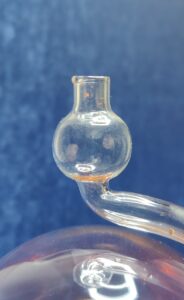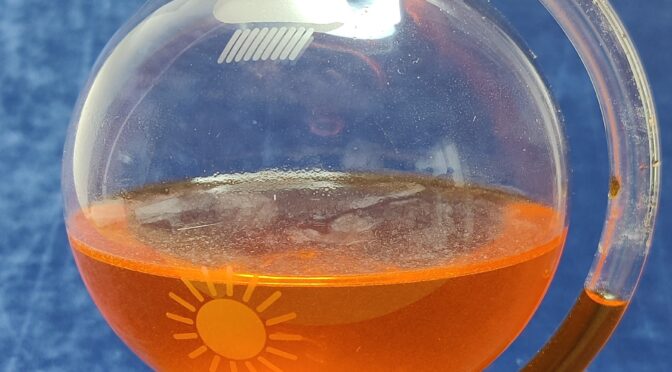![]()
Again and again I look for simple, interesting things. This time I was fascinated by a measuring device or rather “display device”, whose operating principle is extremely simple and yet very effective. In addition, from my point of view, it is also an eye-catcher – it is the so-called Goethe Barometer. The best-known form is probably the bulbous glass hanging on the wall with a beak, similar to a watering can, in which the water level indicates the air pressure. I found a slightly differently constructed version of this glass on the net…
A little about the history of this structure:
To a gentleman named Evangelista Toricelli (1608-1647), an Italian physicist and mathematician, we owe the knowledge and proof that the air pressure is subject to fluctuations. He built the first barometer named after him in 1643. In 1644 he developed the mercury thermometer.

Der deutsche Dichter Johann Wolfgang Göthe, beschäftigte sich auch mit den Naturwissenschaften. Er machte selbst viele naturwissenschaftliche Experimente und entwickelte später ein einfaches, aber wirkungsvolles Barometer auf den Grundlagen des Toricelli.
Die Funktionsweise:
The barometer shows air changes quickly and precisely. When the air pressure rises, the water column in the indicator pipe falls and when the air pressure falls, it rises. This is made possible by the air trapped in the glass. The volume of the air always remains the same at a constant temperature. If the external air pressure rises or falls, the trapped air is compressed or expanded via the water column. Since the water cannot be compressed, it is the ideal medium to make the pressure differences visible. The height of the water column thus indicates the air pressure. If the air pressure is high in good weather, the external pressure is higher than the pressure of the trapped air and the water column decreases as the trapped air is compressed. At low air pressure, it can expand and the level of the water column increases.

This short time-lapse video shows the change in the water level when the air pressure changes:




